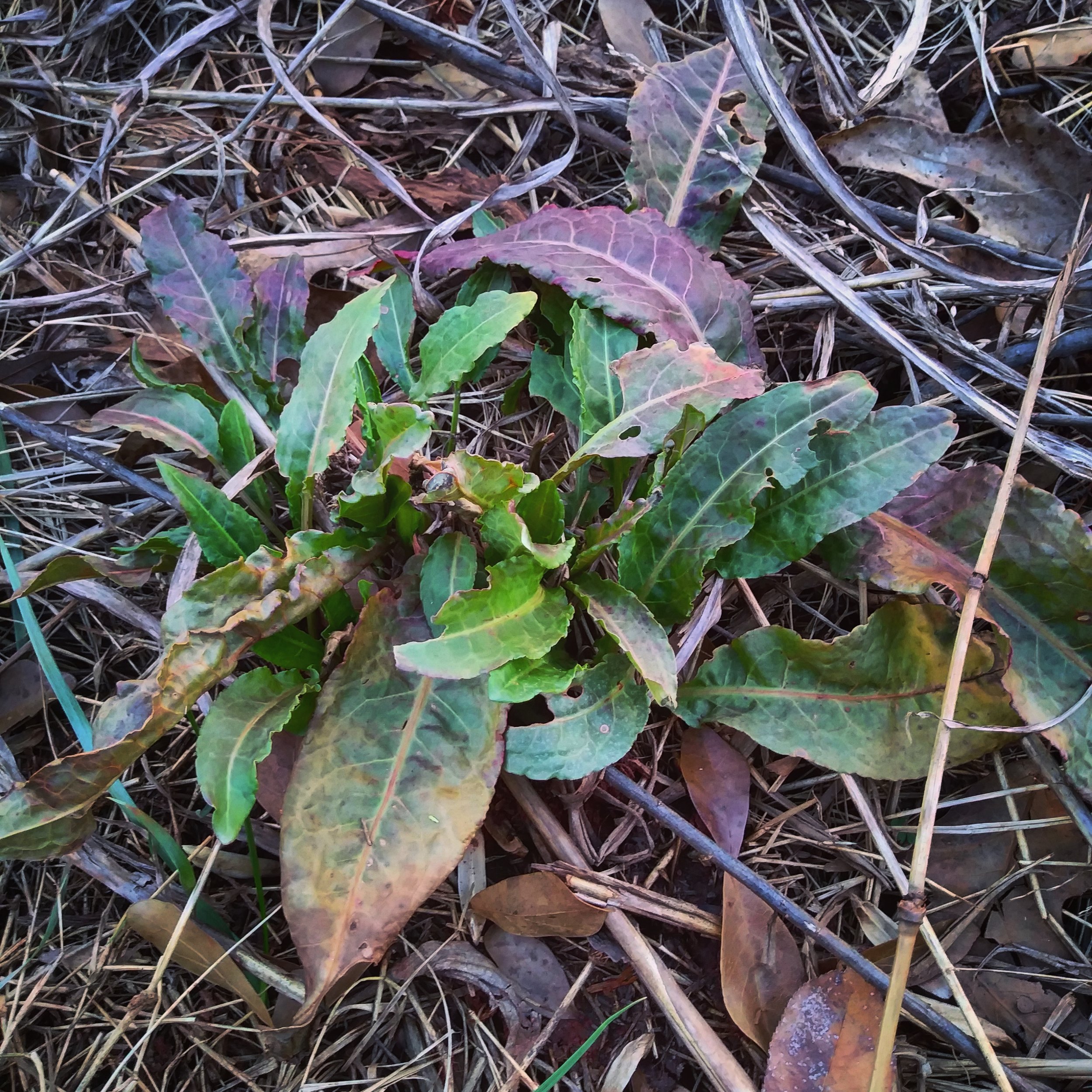Today’s plant for #WildEdibleWednesday is Armoracia rusticana, or Wild Horseradish. Horseradish is a plant we’re probably all familiar with as a prepared condiment, but there’s a lot more to this herb than just a Heinz bottle. It’s edible as well as medicinal, and even has sanitary uses. And as an evergreen, it’s a wild edible you can rely on year-round.
Wild horseradish has become naturalized nearly worldwide and can be found growing on every continent except Antarctica. It is native to the Slavic nations of Eastern Europe, where it has been used in traditional cuisine for millennia. It was exported and cultivated first by the Greeks and then by the Romans – Pliny wrote about it in his Natural History, and Cato discussed it at length in his treatises on agriculture. It came to America with the first European colonists, and was grown in the gardens of George Washington and Thomas Jefferson.
Horseradish is a perennial herb in the Brassica family that includes broccoli, mustard, cabbage, turnips, brussels sprouts, and wasabi. Wild specimens are usually less than 2’ tall, but it can grow to twice that size in cultivation. Leaves are a foot long or more, oblong with distinct veins and a sort of ruffled shape. The easiest way to verify horseradish is to dig it up – the root is what you’re after anyway. Horseradish roots are large, white, tapered tubers that are usually at least a foot long. They can be very difficult to dig up – horseradish is a terrible weed to try and get rid of if it’s growing where you don’t want it. Interestingly enough, the raw root has almost no scent until crushed or grated. When they cell walls are broken, the plant releases mustard oil which is the source of the pungent and sometimes bitter odor and flavor. This process is a natural defense mechanism against browsing animals, it just so happens that humans think it makes a good food seasoning.
Horseradish has virtually no calories, however, it is very high in fiber, so it’s a good way to satiate your hunger while you look for more nourishing food when in a wilderness survival situation. And it’s dang good as an addition to cooked dishes at home, especially meats. As a food, horseradish has loads of beneficial vitamins, trace minerals, and phytonutrients. It is extremely high in vitamin C, folate, potassium, calcium, magnesium, zinc, and manganese, as well as omega-3 and omega-6 fatty acids. Horseradish actually began its journey with humans not because of its flavor, but because of its ability to preserve meat. There is a compound called allyl isothiocyanate present in horseradish that is toxic to most bacteria, meaning that questionable or even outright spoiled meat could be cooked with horseradish and be considered reasonably safe to eat, and the pungent flavor would mask the taste. Because of this, one of horseradish’s more surprising uses is as a cleaning agent and disinfectant. Cleaning your knives, utensils, cutting board, and even your hands with cut up pieces of horseradish can kill a multitude of bacteria, even the big bad ones like E. coli, listeria, and staphylococcus.
In the writings of Pliny, Cato, and other classical scholars, horseradish was dismissed as an edible (only Slavic barbarians ate that stuff), and was considered exclusively medicinal.
Horseradish has a wide array of medicinal uses. Possibly the most obvious (if you’ve ever smelled it fresh) is to treat sinus trouble. The active enzymes and phytochemicals will change the physical character of mucus and help it loosen, the mustard oil reduces inflammation in the nasal passages, and the antiseptic qualities of the allyl isothiocyanate will help treat sinus infections. To do this, take a large spoonful of crushed, shredded, or grated horseradish and hold it in your mouth like a wad of dip. When the flavor is completely gone, spit it out and repeat as needed until symptoms improve. It usually only takes one or two spoonfuls to see progress! Horseradish is also a diuretic – it can stimulate kidney and bladder function to help treat kidney infections and flush toxins.
But possibly the most interesting and impressive use of horseradish is as an antioxidant superfood to prevent and maybe even treat cancer. Horseradish has two phytochemicals, isothiocyanate and sinigrin, which are antioxidants that prevent free radical proliferation and cancerous growth. They both prevent the mutation of healthy cells into cancerous cells. Both of these compounds are being researched for their documented cancer-fighting ability and may end up being synthesized as part of a new generation of anti-cancer drugs.
From its humble and slightly putrid beginnings, it’s funny to think that horseradish may end up being a real lifesaver. If you’ve got some, hang on to it. If not, it’s very easy to cultivate. Horseradish will propagate from raw root chunks (as long as the skin is present) just like a potato. Give it a try!
- Alex

